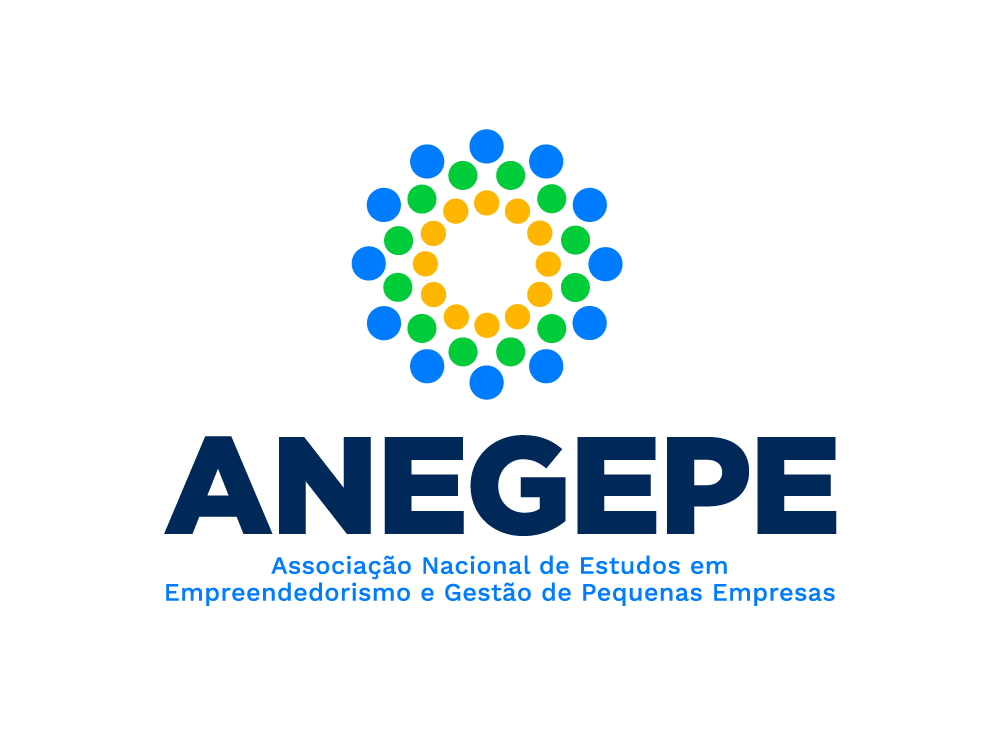Desempenho da inovação de produto: análise de medidas e escalas de mensuração para aplicação em PMEs
DOI:
10.14211/regepe.e1892Palavras-chave:
Desempenho da inovação de produto, Escala de mensuração, Gestão da inovação, Micros, pequenas e médias empresas.Resumo
Objetivo: Apresentar a análise das medidas e escalas de desempenho da inovação de produto, aplicadas em estudos sobre as micro, pequenas e médias empresas (PME). Metodologia/abordagem: Pesquisa de caráter exploratório e qualitativo-descritivo, que utilizou como método de investigação a revisão bibliográfica sistemática, a partir de artigos encontrados na base de dados da Capes, no corte temporal entre os anos de 1990 e 2020 (dezembro). Principais resultados: 92 artigos sobre o desempenho da inovação de produto foram identificados, sendo que 41 utilizaram medidas objetivas (chamadas de proxies) e 51, escalas psicométricas. Destes últimos, sete escalas foram desenvolvidas e replicadas em estudos com PME. Contribuições teóricas/metodológicas: Tendo em vista a crescente importância da gestão da inovação nas PME, e considerando a divergência entre as formas e as variáveis utilizadas na mensuração do desempenho das ações organizacionais em prol da inovação de produtos, esta pesquisa aponta as medidas mais adequadas a essa análise. Relevância/originalidade: A busca pela inovação de produtos tem crescido nos últimos anos, o que torna necessário e urgente – como evidencia esta pesquisa – o conhecimento das ferramentas de análise do desempenho das inovações realizadas. Contribuições sociais/para a gestão: este artigo proporciona aos gestores das PME informações e ferramentas para a análise dos esforços na mensuração do desempenho da inovação de produtos nas PME.
CLASSIFICAÇÃO JEL: O32
Downloads
Referências
Aksoy, H. (2017). How do innovation culture, marketing innovation and product innovation affect the market performance of small and medium-sized enterprises (SMEs)? Technology in Society, 51(4), 133-141. https://doi.org/10.1016/j.techsoc.2017.08.005
Alegre, J., & Chiva, R. (2008). Assessing the impact of organizational learning capability on product innovation performance: an empirical test. Technovation, 28(6), 315-326. https://doi.org/10.1016/j.technovation.2007.09.003
Alegre, J., Lapiedra, R, & Chiva, R. (2006). A measurement scale for product innovation performance. European Journal of Innovation Management, 9(4), 333-346. https://doi.org/10.1108/14601060610707812
Atuahene-Gima, K., & Wei, R. (2011). The Vital Role of Problem-Solving Competence in New Product Success. Journal of Product Innovation Management, 28(1), 81-98. https://doi.org/10.1111/j.1540-5885.2010.00782.x
Bakar, L. J. A., & Ahmad, H. (2010). Assessing the relationship between firm resources and product innovation performance. Business Process Management Journal, 16(3), 420-435. https://doi.org/10.1108/14637151011049430
Belderbos, B., Carree, M., & Lokshin, B. (2004). Cooperative R&D and firm performance. Research Policy, 33(10), 1477-1492. https://doi.org/10.1016/j.respol.2004.07.003
Beyene, K. T., Shi, C. S., & Wu, W. W. (2016). Linking culture, organizational learning orientation and product innovation performance: the case of Ethiopian manufacturing firms. South African Journal of Industrial Engineering, 27(1), 88-101. https://doi.org/10.7166/27-1-1334
Blindenbach, D. F., & Ende, J. V. D. (2010). Innovation Management Practices Compared: The Example of Project-Based Firms. Journal of Product Innovation Management, 27(5), 705-724. https://doi.org/10.1111/j.1540-5885.2010.00746.x
Bodas Freitas, I. M., & Fontana, R. (2018). Formalized Problem-Solving Practices and the Effects of Collaboration with Suppliers on a Firm’s Product Innovation Performance. Journal of Product Innovation Management, 35(4), 565–587. https://doi.org/10.1111/jpim.12432
Brown, S. L., & Eisenhardt, K. M. (1995). Product development: Past research, present finding sand future directions. Academy of Management Review, 20(2), 343-378. Recuperado de https://ssrn.com/abstract=1506375
Calisir, F., Gumussoy, C., & Guzelsoy, E. (2013). Impacts of learning orientation on product innovation performance. The Learning Organization, 20(3), 176-194. https://doi.org/10.1108/09696471311328442
Carbonell, P., & Rodríguez Escudero, A.I. (2010). The effect of market orientation on innovation speed and new product performance. Journal of Business & Industrial Marketing, 25(7), 501-513. https://doi.org/10.1108/08858621011077736
Charterina, J., Basterretxea, I., & Landeta, J. (2017). Collaborative relationships with customers: generation and protection of innovations. Journal of Business & Industrial Marketing, 32(5), 733-741. https://doi.org/10.1108/JBIM-02-2017-0052
Chen, Y., Wang, Y., Nevo, S., Benitez-Amado, J., & Kou, G. (2015). IT capabilities and product innovation performance: The roles of corporate entrepreneurship and competitive intensity. Original Research Article Information & Management, 52(6), 643-657. https://doi.org/10.1016/j.im.2015.05.003
Cheng, C.-F., Chang, M.-L., & Li, C.-S. (2013). Configural paths to successful product innovation. Journal of Business Research, 66(12), 2561-2573. https://doi.org/10.1016/j.jbusres.2012.10.006
Cooper, R. G., & Kleinschmidt, E. J. (1995). Performance Typologies of New Product Projects. Industrial Marketing Management, 24(5), 439-456. https://doi.org/10.1016/0019-8501(95)00034-8
Curado, C., Muñoz-Pascual, L., & Galende, J. (2018). Antecedents to innovation performance in SMEs: A mixed methods approach. Journal of Business Research. 89, 206-215. https://doi.org/10.1016/j.jbusres.2017.12.056.
Dannels, E., & Kleinschimidt, E. J. (2001). Product innovativeness from the firm’s perspective: Its dimensions and their relation with project selection and performance. Journal of Production Innovation Management, 18(6), 357-373. https://doi.org/10.1111/1540-5885.1860357
De Luca, L. M. & Atuahene-Gima, K. (2007). Market Knowledge Dimensions and Cross-Functional Collaboration: Examining the Different Routes to Product Innovation Performance. Journal of Marketing, 71(1), 95-112 https://doi.org/10.1509/jmkg.71.1.095
DeVellis, R. F. (2016). Scale development: Theory and applications (Vol. 26, 4th. ed.). Newbury Park, CA: Sage Publications.
Dewagan, V., & Godse, M. (2014). Towards a holistic enterprise innovation performance Measurement system. Technovation, 34(9), 536-545. https://doi.org/10.1016/j.technovation.2014.04.002
Dul, J., & Ceylan, C. (2014). The Impact of a Creativity‐supporting Work Environment on a Firm’s Product Innovation Performance. Journal of Product Innovation Management, 31(6), 1254-1267. https://doi.org/10.1111/jpim.12149
Eggert, A., Hogreve, J., Ulaga, W., & Muenkhoff, E. (2011). Industrial services, product innovations, and firm profitability: A multiple-group latent growth curve analysis. Industrial Marketing Management, 40(5), 661-670. https://doi.org/10.1016/j.indmarman.2011.05.007
Estrada, I., Faems, D., & Faria, P. (2016). Competition and product innovation performance: The role of international knowledge sharing mechanisms and formal knowledge protection mechanisms. Industrial Marketing Management, 53, 56-65. https://doi.org/10.1016/j.indmarman.2015.11.013
Evangelista, R., & Vezzzani, A. (2010). The economic impact of technological and organizational innovations. A firm-level analysis. Research Policy, 39(10), 1253-1263. https://doi.org/10.1016/j.respol.2010.08.004.
Faems, D., Visser, M., Andries, P., & Van Looy, B. (2010). Technology Alliance Portfolios and Financial Performance: Value-Enhancing and Cost-Increasing Effects of Open Innovation. Journal Production Innovation Management; 27(6), 785-796. https://doi.org/10.1111/j.1540-5885.2010.00752.x
Falasca, M., Zhang, F., Conchar, M., & Li, L. (2017). The impact of customer knowledge and marketing dynamic capability on innovation performance: an empirical analysis. Journal of Business & Industrial Marketing, 32(7), 901-912. https://doi.org/10.1108/JBIM-12-2016-0289
Fernández‐Mesa, A., Alegre‐Vidal, J., Chiva‐Gómez, R., & Gutiérrez‐Gracia, A. (2013). Design management capability and product innovation in SMEs. Management Decision, 51(3), 547-565. https://doi.org/10.1108/00251741311309652
Fosfuri, A., & Tribó, J. A. (2008). Exploring the Antecedents of Potential Absorptive Capacity and its impact on Innovation Performance. Omega, 36, 173-187. Recuperado de https://ssrn.com/abstract=2487636
Garcia, R., & Calantone, R. (2002). A critical look at technological innovation typology and innovativeness terminology: a literature review. The Journal of Product Innovation Management, 19(2), 110-132. https://doi.org/10.1111/1540-5885.1920110
Gemunden, H. G., Ritter, T., & Heydebreck, P. (1996). Network configuration and innovation success: An empirical analysis in German high-tech industries. International Journal of Research in Marketing, 13(5), 449-462. https://doi.org/10.1016/S0167-8116(96)00026-2
Griffin, A., & Page, A. L. (1993). An Interim Report on Measuring Development Success and Failure. Journal of Product Innovation Management, 10(4), 291-308. Recuperado de https://www.sciencedirect.com/science/article/abs/pii/073767829390072X
Grünbaum, N. N., & Stenger, M. (2013). Dynamic Capabilities: Do They Lead to Innovation Performance and Profitability? IUP Journal of Business Strategy, 10(4), 68-85.
Haddad, M. I., Williams, I. A., Hammoud, M. S., & Dwyer, R. J. (2019). Strategies for implementing innovation in small and medium-sized enterprises. World Journal of Entrepreneurship, Management and Sustainable Development, 16(1), 12-29. https://doi.org/10.1108/WJEMSD-05-2019-0032
Hannachi, Y. (2015). Development and Validation of a Measure for Product Innovation Performance: The PIP Scale. Journal of Business Studies Quarterly, 6(3), 23-35. Recuperado de http://search.proquest.com/openview/79a6b0b890c8d9b279d69c7cbc7d4644/1?pq-rorigsite=gscholar
Heidt, T. V. D. (2008). Developing and Testing Model of Cooperative Interorganizational Relationships (IORS) in Product Innovation in an Australian Manufacturing Context: A Multi-stakeholder Perspective (Doctoral Thesis). Sourthern Cross University, Lismore, Australia. Recuperado de http://epubs.scu.edu.au/theses/70/
Henard, D. H., & McFadyen, M. A. (2012). Resource Dedication and New Product Performance: A Resource-Based View. Journal Product Innovation Management. 29(2), 193-204. https://doi.org/10.1111/j.1540-5885.2011.00889.x
Henttonen, K., Ritala, P., & Jauhiainen, T. (2011). Exploring open Search Strategies and their perceived impact on Innovation Performance – Empirical Evidence. International Journal of Innovation Management, 15(3), 525-541. https://doi.org/10.1142/S1363919611003428
Hsu, Y., & Fang W. (2009). Intellectual capital and new product development performance: The mediating role of organizational learning capability. Technological Forecasting and Social Change, 76(5), 664-677. https://doi.org/10.1016/j.techfore.2008.03.012
Hu, X., Tang, Y., & Motohashi, K. (2020). Varied university-industry knowledge transfer channels and product innovation performance in Guangdong manufacturing firms. Knowledge Management Research & Practice. https://doi.org/10.1080/14778238.2020.1747367
Iddris, F. (2019). Innovation capability and product innovation performance: the case of low-tech manufacturing firms. European Business Review, 31(5), 646-668. Recuperado de https://www.emerald.com/insight/content/doi/10.1108/EBR-12-2016-0159/full/html
Im, S., Nakata, C., Park, H., & Ha, Y. W. (2003). Determinants of Korean and Japanese new product performance: An interrelational and process view. Journal of International Marketing, 11(4), 81-113. Recuperado de https://www.jstor.org/stable/25048954
Inauen, B., & Schenker-Wicki, S. (2012). Fostering radical innovations with open innovation. European Journal of Innovation Management, 15(2), 212-231. https://doi.org/10.1108/14601061211220986
Katila, R. (2002). New product search over time: past ideas in their prime? Academy of Management Journal, 45(5), 995-1010. https://doi.org/10.5465/3069326
Kobarg, S., Stumpf-Wollersheim, J., & Welpe, I. M. (2017). University-industry collaboration and product innovation performance: the moderating effects of absorptive capacity and innovation competencies. Journal Technologic Transfer, 43, 1696-1724. https://doi.org/10.1007/s10961-017-9583-y
Köhler, C., Sofka, W., & Grimpe, C. (2012). Selective search, sectoral patterns, and the impact on product innovation performance. Research Policy, 41(8), 1344-1356. https://doi.org/10.1016/j.respol.2012.03.020
Lee, J. M., Joo, S. H., & Kim, Y. (2018). The complementary effect of intellectual property protection mechanisms on product innovation performance. R&D Management, 48(3), 320-330. https://doi.org/10.1111/radm.12296
Li, H., & Atuahene-Gima, K. (2001). Product Innovation strategy and the performance of new technology ventures in China. Academy of Management Journal, 44(6), 1123-1134. Recuperado de http://www.jstor.org/stable/3069392
Lin, R., Che, R., & Ting, C. (2012). Turning knowledge management into innovation in the high‐tech industry. Industrial Management & Data Systems, 112(1), 42-63. https://doi.org/10.1108/02635571211193635
Liu, W., & Atuahene-Gima, K. (2018, August). Enhancing product innovation performance in a dysfunctional competitive environment: The roles of competitive strategies and market-based assets. Industrial Marketing Management, 73, 7-20. https://doi.org/10.1016/j.indmarman.2018.01.006
Löfsten, H. (2014). Product innovation processes and the trade-off between product innovation performance and business performance. European Journal of Innovation Management, 17(1), 61-84. https://doi.org/10.1108/EJIM-04-2013-0034
Lukovszki, L., Rideg, A., & Sipos, N. (2020). Resource-based view of innovation activity in SMEs: an empirical analysis based on the global competitiveness project. Competitiveness Review, ahead-of-print. https://doi.org/10.1108/CR-01-2020-0018
Lynn, G. S., Reilly, R. R., & Akgun, A. E. (2000). Knowledge management in new product teams: practices and outcomes. IEEE Transactions on Engineering Management, 47(2), 221-231. https://doi.org/10.1109/17.846789.
Manthey, N. B., Verdinelli, M. A., Rossetto, C. R., & Carvalho, C. E. (2016). Product innovation performance: proposition and test of the one scale. Iberoamerican Journal of Strategic Management, 15(4), 43-62. Recuperado de https://periodicos.uninove.br/riae/article/view/15664
Menguc, B., & Auh, S. (2010). Development and return on execution of product innovation capabilities: The role of organizational structure. Industrial Marketing Management, 39(5), 820-831. https://doi.org/10.1016/j.indmarman.2009.08.004
Miguel, S., Moya-Anegón, F., & Herrero-Solana, V. (2008). A new approach to institutional domain analysis: Multilevel research fronts structure. Scientometrics, 74(3), 331-344. https://doi.org/10.1007/s11192-007-1586-2
Mitrega, M., Forkmann, S., Zaefarian, G., & Henneberg, S. C. (2017). Networking capability in supplier relationships and its impact on product innovation and firm performance. International Journal of Operations & Production Management, 37(5), 577-606. https://doi.org/10.1108/IJOPM-11-2014-0517
Montoya-Weiss, M. M., & Calantone, R. (1994). Determinants of new product performance: A review and meta-analysis. Journal of product innovation management, 11(5), 397-417.
Molina-Castillo, F. J., & Munera-Aleman, J. R. (2009). The joint impact of quality and innovativeness on short-term new product performance. Industrial Marketing Management, 38(8), 984-993. https://doi.org/10.1016/j.indmarman.2008.06.001
Mostaghel, R., Oghazi, P., Patel, P. C., Parida, V., & Hultmane, M. (2019). Marketing and supply chain coordination and intelligence quality: A product innovation performance perspective. Journal of Business Research, 101, 597-606. https://doi.org/10.1016/j.jbusres.2019.02.058
Muñoz-Pascual, L., Curado, C., & Galende, J. (2019). The Triple Bottom Line on Sustainable Product Innovation Performance in SMEs: A Mixed Methods Approach. Sustainability, 11(6), 1689. https://doi.org/10.3390/su11061689
Nieto, M., & Santamaría, S. (2007). The importance of diverse collaborative networks for the novelty of product innovation. Technovation, 27(6-7), 367-377. https://doi.org/10.1016/j.technovation.2006.10.001
Nwachukwu, C. E., Chládková, H., & Fadeyi, O. (2018). Strategy formulation process and innovation performance nexus. International Journal for Quality Research, 12(1), 147-164. https://doi.org/10.18421/IJQR12.01-09
O’Regan, N., & Ghobadian, A. (2004). The importance of capabilities for strategic direction and performance. Management Decision, 42(2), 292-312. https://doi.org/10.1108/00251740410518525
OECD/Eurostat. (2005). The Measurement of Scientific and Technological Activities. Oslo Manual: Guidelines for Collecting and Interpreting Innovation Data (3rd. ed.). Paris: OECD Publishing. https://doi.org/10.1787/9789264013100-en.
Padilha, C. K., & Gomes, G. (2016). Innovation culture and performance in innovation of products and processes: a study in companies of textile industry. Revista de Administração e Inovação, 13(4), 285-294. https://doi.org/10.1016/j.rai.2016.09.004
Paula, F. O., & Silva, J. F. (2020). Combining Knowledge to Improve Product and Process Innovation and Performance of SMES in Developing Economies. International Journal of Innovation and Technology Management, 17(2), 2050013. https://doi.org/10.1142/S0219877020500133
Ritter, T., & Gemünden, H. G. (2004). The impact of a company’s business strategy on its technological competence, network competence and innovation success, Journal of Business Research. 57(5), 548-556. https://doi.org/10.1016/S0148-2963(02)00320-X
Rosli, M. M., & Sidek, S. (2013). The Impact of Innovation on the Performance of Small and Medium Manufacturing Enterprises: Evidence from Malaysia. Journal of Innovation Management in Small & Medium Enterprise, 1-16. https://doi.org/10.5171/2013.885666
Sarpong, O., & Teirlinck, P. (2018). The influence of functional and geographical diversity in collaboration on product innovation performance in SMEs. Journal Technology Transference, 43(6), 1667-1695. https://doi.org/10.1007/s10961-017-9582-z
Sattayaraksa, T., & Boon-itt, S. (2018). The roles of CEO transformational leadership and organizational factors on product innovation performance. European Journal of Innovation Management, 21(2), 227-249. https://doi.org/10.1108/EJIM-06-2017-0077
Shang, Y., Yu, H., & Ma, Z. (2020). Venture Investors’ Monitoring and Product Innovation Performance in Serial Crowdfunding Projects: An Empirical Test. The Chinese Economy. 53 (3), 300-314. https://doi.org/10.1080/10971475.2020.1721045
Si, Y., Liu, W., & Cao, X. (2020). The effects of external knowledge source heterogeneity on enterprise process and product innovation performance. PLoS ONE, 15(6). https://doi.org/10.1371/journal.pone.0234649
Silva, C., Mathrani, S., & Jayamaha, N. (2016). The impact of ICT usage on collaborative product innovation performance. International Journal of Innovation Management, 20(5), 1640012. https://doi.org/10.1142/S1363919616400120
Sok, P., & O’Cass, A. (2015). Examining the new product innovation – performance relationship: Optimizing the role of individual-level creativity and attention-to-detail. Industrial Marketing Management, 47, 156-165. https://doi.org/ 10.1016/j.indmarman.2015.02.040
Storey C., & Easingwood, C. (1999). Types of New Product Performance: Evidence from the Consumer Financial Services Sector. Journal of Business Research, 46(2), 193-203. https://doi.org/10.1016/S0148-2963(98)00022-8
Tavassoli, S., & Bengtsson, L. (2018). The role of business model innovation for product innovation performance. International Journal of Innovation Management, 22(7), 1-35. https://doi.org/10.1142/S1363919618500615
Tranfield, D., Denyer, D., & Smart, P. (2003). Towards a Methodology for Developing Evidence-Informed Management Knowledge by Means of Systematic Review. British Journal of Management, 14(3), 207-222. https://doi.org/10.1111/1467-8551.00375
Tsai, K.-H. (2009). Collaborative networks and product innovation performance: Toward a contingency perspective. Research Policy. 38(5), 765-778. https://doi.org/10.1016/j.respol.2008.12.012
Tsai, K., Hsu, T. T., & Fang, W. (2012). Relinking Cross‐functional Collaboration, Knowledge Integration Mechanisms, and Product Innovation Performance: A Moderated Mediation Model. Canadian Journal of Administrative Sciences/Revue Canadienne des Sciences de Administration, 29(1), 25-39. https://doi.org/10.1002/cjas.192
Ulusoy, G., & Yegenoglu, H. (2007, February). Innovation Performance and Competitive Strategies in the Turkish Manufacturing Industry. Proceedings of the International Research Conference on Quality, Innovation and Knowledge Management, New Delhi, India, 8. Recuperado de http://research.sabanciuniv.edu/7146/1/QIK2007_paper.pdf
Uğurlu, Ö. Y., & Kurt, M. (2016). The impact of organizational learning capability on product innovation performance: evidence from the Turkish manufacturing sector. Emerging Markets Journal, 6(1), 70-84. https://doi.org/10.5195/emaj.2016.99
Uwizeyemungu, S., Poba-Nzaou, P., & St-Pierre, J. (2015). Assimilation patterns in the use of advanced manufacturing technologies in SMEs: exploring their effects on product innovation performance. Journal of Information Systems & Technology Management, 12(2), 271-288. https://doi.org/10.4301/S1807-17752015000200005
Valladares, P. S. D. A. (2012). Capacidade de Inovação: Análise Estrutural e do efeito moderador da organicidade da estrutura organizacional e da gestão de projetos (Tese de doutorado). Fundação Getúlio Vargas, São Paulo, SP, Brasil. Recuperado de http://bibliotecadigital.fgv.br/dspace/handle/10438/10243
Wang, Z., & Wang, N. (2012). Knowledge sharing, innovation and firm performance. Expert Systems with Applications, 39(10), 8899-8908. https://doi.org/10.1016/j.eswa.2012.02.017
Wu, J., Wu, Z., & Si, S. (2016). The influences of the Internet-based collaboration and intimate interactions in buyer-supplier relationship on product innovation. Journal of Business Research, 69(9), 3780-3787. https://doi.org/10.1016/j.jbusres.2015.12.070
Yam, R. C. M., Guan, J. C., Pun, K. F., & Tang, E. P. (2004). An audit of technological innovation capabilities in chinese firms: some empirical findings in Beijing, China. Research Policy, 33(8), 1123-1140. https://doi.org/10.1016/j.respol.2004.05.004
Yang, X.; Li, S.; Yang, H. (2015). Market-based reforms, synchronization and product innovation. Industrial Marketing Management, 50, p.p. 30–39. http://dx.doi.org/10.1016/j.indmarman.2015.04.015
Yusr, M. M., Mokhtara, S. S. M., Abaid, W. M. A., Perumal, S., & Fauzia, W. I. (2018). The antecedents’ strategies and processes of product innovation performance. Management Science Letters, 8(11), 1183-1198. https://doi.org/10.5267/j.msl.2018.8.006
Zhang, Y. & Li, H. (2010). Innovation search of new ventures in a technology cluster: the role of ties with service intermediaries. Strategic Management Journal. 31 (1), 88-109. https://doi.org/10.1002/smj.806
Zhang, M., Qi, Y., Wang, Z., Pawar, K. S., & Zhao, X. (2018). How does intellectual capital affect product innovation performance? Evidence from China and India. International Journal of Operations & Production Management, 38(3), 895-914. https://doi.org/10.1108/IJOPM-10-2016-0612
Downloads
Publicado
Métricas
Visualizações do artigo: 1363 PDF downloads: 115 PDF (English) downloads: 212
Como Citar
Edição
Seção
Licença
Copyright (c) 2021 Nilvane Boehm Manthey, Éverton Luiz Pellizzaro De Lorenzi Cancellier, Rafael Tezza

Este trabalho está licenciado sob uma licença Creative Commons Attribution 4.0 International License.
Autores que publicam nesta revista concordam com os seguintes termos:
- O(s)/A(s) autor(es)/autora(s) autorizam a publicação do texto na revista;
- A revista não se responsabiliza pelas opiniões, ideias e conceitos emitidos nos textos, por serem de inteira responsabilidade de seus autores/autoras;
- Autores/autoras mantêm os direitos autorais e concedem à revista o direito de primeira publicação, com o trabalho publicado sob a Licença CC BY 4.0
, que permite o compartilhamento do trabalho com reconhecimento da autoria e publicação inicial nesta revista;
- Autores/autoras são permitidos e encorajados a postar seu trabalho (Versão submetida, Versão aceita [Manuscrito aceito pelo autor/autora] ou Versão publicada [Versão do registro]) online, por exemplo, em repositórios institucionais ou preprints, pois isso pode levar a trocas produtivas, bem como a citações anteriores e maiores de trabalhos publicados. A REGEPE pede como condição política para os autores/autoras que indiquem/vinculem o artigo publicado com DOI. Veja o Efeito do Acesso Livre.















